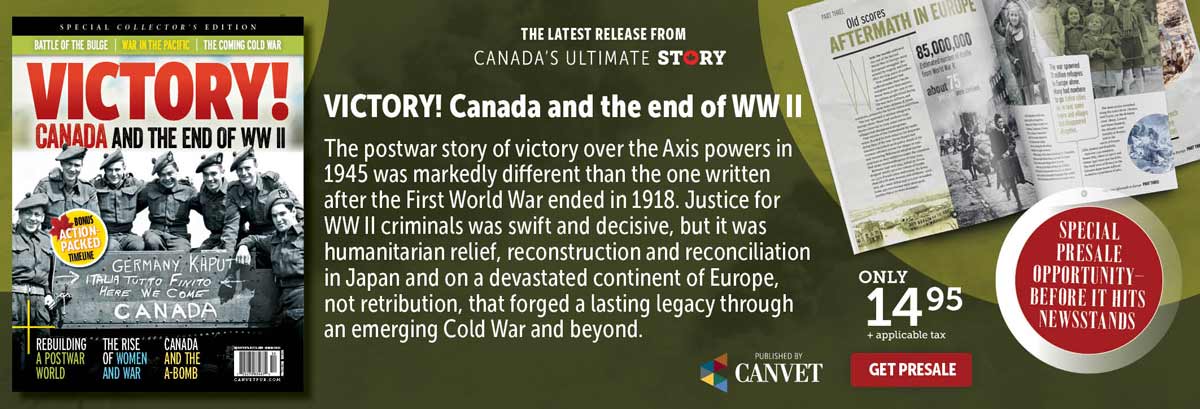Canada is at war again, a real shooting war, having dispatched six CF-18s and two spares, two Auroras and a tanker to the Middle East to help a United States-led “coalition of the willing” to contain, degrade and ultimately destroy the Islamic State, in the words of U.S. President Barack Obama. With over 600 maintenance personnel, aircrew and controllers the Canadian effort was launched after significant U.S. and allied pressure to help deal with the most murderous Islamic faction to emerge in the area in modern times.
![Royal Canadian Air Force CF-18 fighter jets taxi to the runway in Kuwait in support of combat missions over Iraq in November. [PHOTO: CANADIAN FORCES COMBAT CAMERA]](https://legionmagazine.com/wp-content/uploads/2015/01/eyeondefence_1.jpg)
Canada’s contribution to the air campaign is in keeping with a practice initiated 24 years ago in 1991 by then-Prime Minister Brian Mulroney who sent Canadian fighter jets—some of which may even be part of today’s attack force—to help the U.S. and other nations expel Iraq from Kuwait. Canadian ships and ground personnel accompanied the small expeditionary force, but the jets were the sharp end of the stick.
It was jets again in 1999 when Prime Minister Jean Chretien joined North Atlantic Treaty Organization forces to stop atrocities and ethnic cleansing of Muslim Kosovars by Serbs. And it was jets yet a third time in 2011 when Canada joined other nations in a campaign ostensibly aimed at stopping the imminent slaughter of civilians in eastern Libya during the civil war that ultimately sent Libyan dictator Muammar Gadhafi packing and then killed him.
Canada is involved in the current campaign to once again stop the slaughter of innocents. It is difficult to find a consistent pattern in four events spread out over 24 years, especially because no Canadian jets were sent to Afghanistan even though Canadian ground troops fought there for close to 10 years. But one observation that most certainly can be made is that Canada’s small air force has played, and will continue to play, a useful role as an instrument of Canadian diplomacy.
It is an inescapable fact of history that it is sometimes necessary to use violence to end violence. In this case attacks from the air will certainly not defeat the Islamic State, but may contain it and undermine its ability to maintain supply lines, to organize military campaigns and, when used tactically, to help the local population defend themselves against the Islamic State’s murderous embrace. That is about all we can do because no one in this country wants to send troops to Iraq and if the locals don’t want to be forced by the Islamic State to return to the Dark Ages, then it is ultimately their fight anyway.
But this brings us once again to the question of how much longer the Royal Canadian Air Force can continue to fly the CF-18 and what will eventually be its replacement. One press report published in late September quoted leaked documents that showed the government is seriously considering yet another upgrade of the remaining fleet to keep the jets flying past 2020 when the government has already spent some $2.6 billion dollars to keep the planes flying until 2020. A lengthy review of the entire question of what course should be selected to maintain a Canadian fighter capability was completed early this year but has not been released. Will it be released prior to the fall election?
To add to the confusion, as this column was written, a new report leaked from Washington claims that the government has decided to take four of the F-35s currently in production in the United States off the assembly line so that Canadian pilots and ground crews can begin to work with the new aircraft in 2015. However, this has been denied by senior officials in Ottawa. An already confusing project is becoming even more so and more than any other major procurement project the government is dealing with these days.
Here is a perfect example of a procurement project that ought to have been completed four years ago but for an opposition using every flaw in a very complex development and production process to denounce the airplane, civilian “experts” claiming the plane would never perform up to requirements or needed another engine, and a government suddenly grown excessively timid about virtually any major defence purchase whenever challenged by the press. These groups are looking at Canada’s purchase of 65 aircraft through a straw and ignoring the hard fact that the U.S. and other countries will buy more than 2,000 of these planes. Why will they? Because there is simply no other choice at the moment. China is already catching up to “fifth-generation” fighter technology and Russia will not be far behind.
The longer this nonsense continues, the less chance that anything good will come of it. Remember the Sea King?
Advertisement




















